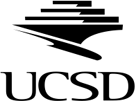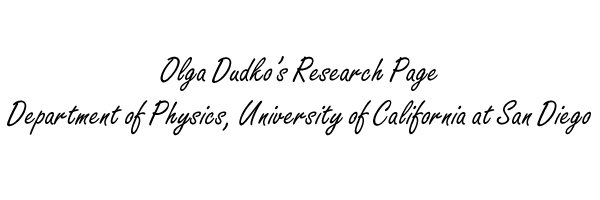FALL 2020
Instructor: Prof. Olga Dudko, office: Urey Hall 7234, email: dudko AT physics DOT ucsd DOT edu
Lecture Time and Location: Tuesdays and Thursdays 2:00 pm – 3:20 pm Pacific Time, Remote/Online/Zoom
Office hours: after class
Text: Primary: Lecture notes.
Recommended textbooks: "Physical Biology of the Cell" by Phillips et al. "Biophysics: Searching for Principles" by Bialek. "Mechanics of Motor Proteins and the Cytoskeleton" by Howard. "Biological Physics" by Nelson. For basic biology background: "Molecular Biology of the Cell" by Alberts et al.
Course description:
This course teaches how quantitative models derived from statistical physics can be used to build quantitative, intuitive understanding of biological phenomena. This course is different from traditional biology/biophysics courses in that the organizational thread that links various topics of this course is based upon the underlying physics prospective. The idea of two-state variables and the Gibbs distribution will be employed to investigate ion channel gating, phosphorylation, and ligand-receptor binding and cooperativity. Physics of random walks will be used to explore the size of a genome and the geography of chromosomes, DNA looping and gene regulation, and the emergence of entropic elasticity. We will explore how random walk gives rise to diffusion, discuss important microscopic details of diffusion (e.g., correlation times), and examine diffusion as a transport mechanism in the cell. The theory of rate equations will be applied to the dynamics of ion channels, enzyme kinetics, cytoskeletal assembly and cell motility. The propagation of nerve impulses will be discussed as a problem in biological electricity.
| 






